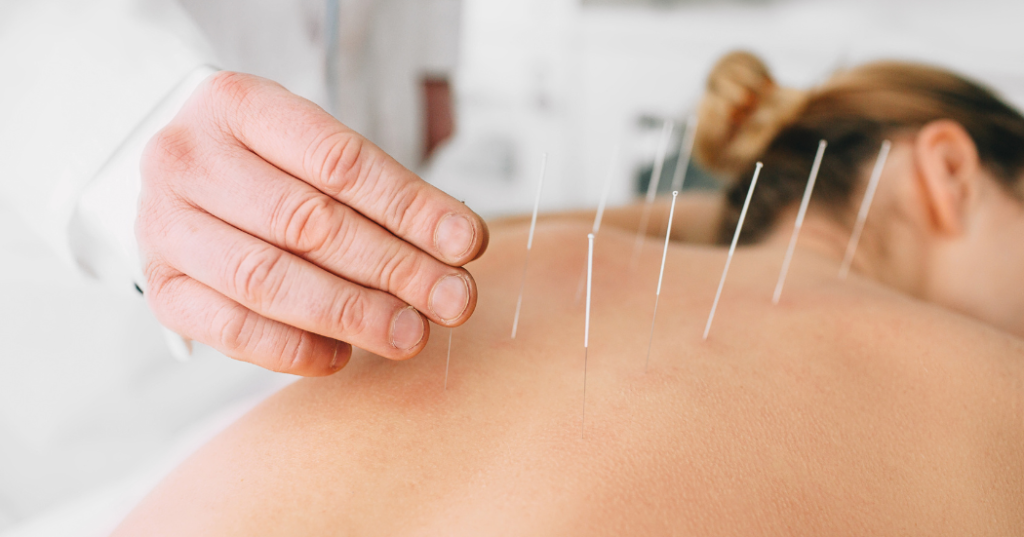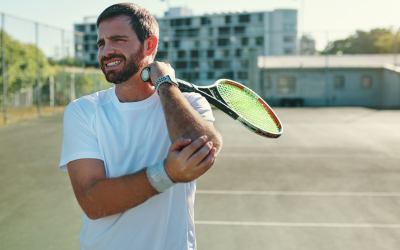Various techniques in complementary and alternative medicine aim to promote health and well-being. Two popular techniques that are often confused are dry needling and acupuncture.
While they both involve using thin needles, key differences exist in their origins, philosophies, techniques, and applications. In this article, we will delve into the details of dry needling and acupuncture, exploring how they work and their potential benefits.
The Origins and Philosophies Behind Dry Needling and Acupuncture
Let’s delve deeper into the fascinating origins and philosophies behind dry needling and acupuncture. These ancient techniques have stood the test of time, offering unique insights into the human body and its healing processes.
Dry needling, or myofascial trigger point dry needling, is deeply rooted in Western medicine. Developed with a profound understanding of musculoskeletal anatomy and neurophysiology, this technique aims to target and release muscular trigger points.
These trigger points, often described as hyperirritable knots within muscle tissue, can lead to pain and dysfunction if left untreated. By skillfully inserting thin needles into these points, practitioners seek to alleviate discomfort and restore proper muscle function.
Contrastingly, acupuncture traces its lineage back to Traditional Chinese Medicine (TCM), a holistic approach to health and wellness. Central to TCM philosophy is the concept of Qi, the body’s vital energy that flows through meridians or pathways.
According to this ancient belief system, disruptions or imbalances in the flow of Qi can manifest as illness or pain. Through strategically placing needles at specific acupoints along the meridians, acupuncture aims to rebalance the body’s energy, promoting harmony and well-being.
Despite their distinct origins and underlying principles, dry needling and acupuncture share a common objective: to alleviate pain, restore balance, and enhance the body’s innate ability to heal itself. These time-honored practices continue to captivate practitioners and patients, offering a blend of tradition and innovation in holistic healthcare.
Key Differences in Techniques and Applications
Now that we understand the origins and philosophies, let’s explore the differences in techniques and applications between dry needling and acupuncture.
The Technique of Dry Needling
Dry needling involves inserting thin needles directly into muscular trigger points. The goal is to stimulate the trigger point, causing a twitch response and subsequent muscle relaxation. This technique targets the source of musculoskeletal pain, addressing specific muscle tightness and dysfunction.
Physical therapists and other healthcare professionals commonly use dry needling to treat musculoskeletal conditions, including muscle strains, athletic injuries, and chronic pain. It can also be an effective adjunct therapy for rehabilitation and pain management.
When performing dry needling, the practitioner carefully identifies the trigger points by palpating the muscles and assessing the patient’s symptoms. Once the trigger points are located, the needles are inserted precisely, targeting the specific areas of muscle tightness and dysfunction. The twitch response observed during treatment clearly indicates successful trigger point stimulation. The resulting muscle relaxation helps alleviate pain and effectively restores normal function.
The Technique of Acupuncture
Acupuncture, on the other hand, involves inserting needles at specific points along the meridians. These points are carefully selected based on the individual’s symptoms and diagnosis. The needles must be retained for different durations, ranging from a few minutes to several hours.
The practice of acupuncture is deeply rooted in Traditional Chinese Medicine (TCM) and is based on balancing the flow of energy, or Qi, throughout the body. Traditional Chinese Medicine (TCM) tells us that an obstructed or imbalanced flow of Qi can result in various health issues. By understanding and addressing the root cause of these imbalances, we can help our bodies achieve optimal health and well-being.
By inserting needles at specific acupuncture points, the practitioner aims to restore the balance of Qi and promote the body’s natural healing abilities.
The practitioner thoroughly assesses the patient’s overall health and well-being during an acupuncture session. This includes evaluating the patient’s pulse, tongue, and other diagnostic techniques used in TCM. Upon completion of the assessment, the practitioner asserts their expertise by confidently identifying the relevant acupuncture points and precisely determining the optimal duration for needle retention.
Acupuncture is a highly effective and widely used technique that provides relief for various conditions such as pain, headaches, digestive disorders, anxiety, and infertility. A holistic approach is vital for overall well-being, not just musculoskeletal focus.
While dry needling and acupuncture involve needle insertion, their techniques and applications differ significantly. Dry needling targets specific trigger points to address musculoskeletal pain and dysfunction, while acupuncture aims to restore energy balance throughout the body to promote overall well-being.

How Dry Needling Works: A Focus on Muscular Trigger Points
Now that we have explored the differences between dry needling and acupuncture, let’s dive deeper into how dry needling works and its focus on muscular trigger points.
Dry needling targets musculoskeletal issues by addressing trigger points and knots within muscles that can cause pain and dysfunction. A needle inserted into a trigger point creates a twitch response, which helps relax the muscle and release tension. This process promotes blood flow to the area, facilitating healing and reducing pain.
In addition to pain relief, dry needling can improve muscle function and range of motion. Dry needling restores muscle function and movement by addressing trigger points.
Dry needling requires specialized training and should only be performed by qualified healthcare professionals.
Furthermore, the twitch response triggered by dry needling stimulates the body’s natural pain-relieving mechanisms. This can lead to the release of endorphins, the body’s natural painkillers, providing additional relief to the patient.
Furthermore, practitioners often use dry needling alongside other therapies, such as physical therapy or chiropractic care. Our multidisciplinary approach provides comprehensive musculoskeletal care, addressing symptoms and underlying causes.
Acupuncture: A Holistic Approach to Energy and Balance
Now, let’s focus on acupuncture and its holistic approach to energy and balance.
Acupuncture is a part of TCM that restores balance and harmony in the body. The practice is rooted in the concept of Qi, the body’s vital energy that flows through meridians. Acupuncturists believe that disruptions in this flow can lead to various health issues.
Acupuncture inserts needles into meridian points that correspond to bodily functions and organs. By stimulating these points, acupuncturists seek to restore the proper flow of Qi and address imbalances in the body.
When inserting needles during acupuncture, they affect the Qi flow, triggering a series of physiological responses in the body. This process stimulates nerves to release endorphins, the body’s natural pain relievers. Additionally, it prompts the release of other neurotransmitters and hormones, enhancing the therapeutic benefits of acupuncture.
Acupuncture not only addresses the physical aspects but also actively tackles the emotional and mental facets of health. Many patients report feeling relaxed and improved mood after acupuncture sessions. By promoting balance and harmony within the body, acupuncture aims to enhance overall well-being and support optimal health.
Choosing Between Dry Needling and Acupuncture: What You Need to Know
Now that we have explored the differences between dry needling and acupuncture, you may wonder which technique is right for you. Ultimately, the choice depends on your specific needs and preferences.
Dry needling can relieve muscle tightness and athletic injuries. Dry needling involves inserting thin needles into muscle trigger points to release tension and alleviate pain. Athletes and individuals dealing with specific muscle tightness or discomfort areas often favor this technique.
On the other hand, acupuncture may be the better option if you are looking for a more holistic approach to address various physical and emotional conditions. Acupuncture, an ancient practice in traditional Chinese medicine, effectively balances the flow of energy, known as qi, throughout the body.
By stimulating specific points along energy pathways, known as meridians, acupuncture can help improve overall well-being and treat various conditions, including musculoskeletal issues.
It is crucial to consult with a qualified healthcare professional specializing in dry needling or acupuncture. They will assess your condition, discuss your treatment goals, and guide you in making an informed decision.
Your practitioner will consider your medical history, current symptoms, and personal preferences to tailor a treatment plan that best suits your needs.
Interested in Acupuncture and Dry Needling?
It is important to note that dry needling and acupuncture are completely different techniques, each with its unique philosophy and methods. Dry needling focuses on musculoskeletal issues, targeting muscular trigger points to relieve pain and improve muscle function. On the other hand, acupuncture takes a holistic approach, aiming to restore the flow of energy and balance within the body.
Choosing between dry needling and acupuncture depends on your specific needs and preferences. By consulting with a qualified healthcare professional, you can make an informed decision and embark on a path toward improved health and well-being.


